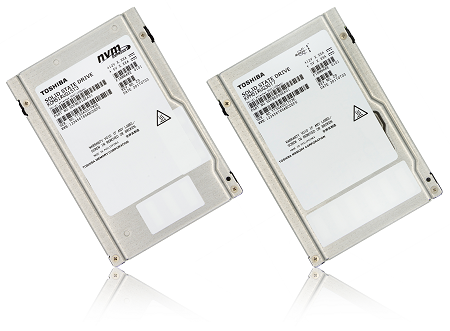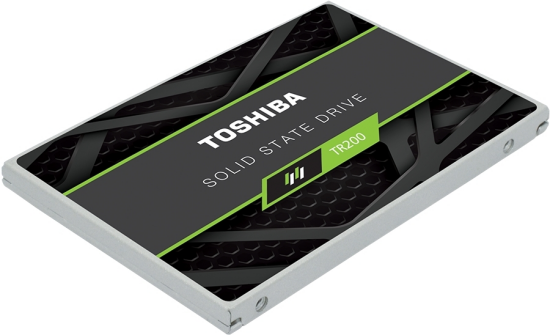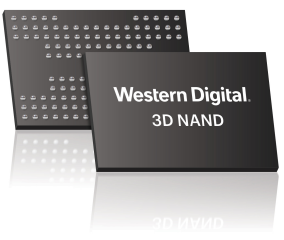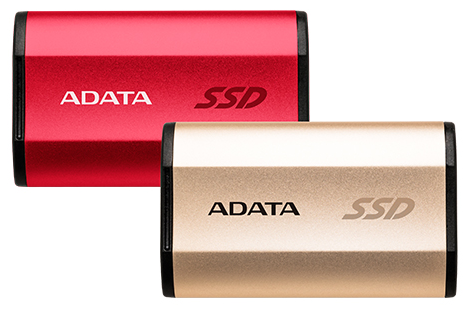- Details
- Flash Memory
Toshiba America Electronic Components, Inc. (TAEC), a committed technology leader, today unveiled the development of two new flagship enterprise solid state drive (SSD) solutions, the TMC PM5 12Gbit/s SAS series and the CM5 NVM Express® (NVMe™) series. Development is expected to be completed in the fourth quarter. Both product lines are built with TMC’s latest 64 layer, 3-bit-per-cell enterprise-class TLC (triple-level cell) BiCS FLASH, making it possible for today’s demanding storage environments to expand the use of flash with cost-optimized 3D flash memory. With all-new, advanced features, the innovative CM5 and PM5 series raise the bar in performance capabilities and create new opportunities for businesses to leverage the power of flash storage.

Offering up to 30.72TB in a 2.5-inch form factor, the TMC PM5 series introduces a full range of endurance and capacity SAS SSDs enabling data centers to effectively address big data demands while streamlining storage deployments. With the industry’s first MultiLink SAS™ architecture, the PM5 series is able to deliver the fastest performance the market has seen from a SAS-based SSD with up to 3,350 MB/s of sequential read and 2,720 MB/s of sequential write in MultiLink mode and up to 400,000 random read IOPS in narrow or MultiLink mode. The PM5 series’ 4-port MultiLink design is an additional technology to achieve high performance, close to PCI EXPRESS® (PCIe®) SSDs, enabling legacy infrastructures to increase productivity without having to be re-architected from the ground up. Furthermore, PM5 SSDs support multi-stream write technology, a feature that intelligently manages and groups data types to minimize write amplification and minimize garbage collection, translating into reduced latency, improved endurance, increased performance and Quality of Service (QoS).
Add a comment- Details
- Flash Memory
Toshiba Memory Corporation, the world leader in memory solutions, today announced the launch of the BG3 series, a new line-up of single package NVM Express (NVMe) client SSDs integrating Toshiba Memory Corporation’s cutting-edge 64-layer, 3-bit-per-cell (TLC) BiCS FLASH and controller in a ball grid array (BGA) package. Sample shipments to PC OEM customers start today in limited quantities, and Toshiba Memory Corporation will gradually increase shipments from the fourth calendar quarter of this year.

The new BG3 series SSDs utilizes the features of PCI EXPRESS (PCIe) Gen3 x 2lanes and NVMeTM Revision 1.2.1 architecture. They are also equipped with a Host Memory Buffer (HMB) feature, which uses the host memory to substitute for DRAMs, saving power and space, and supporting developers of compact devices who must achieve a balance between high performance and low power consumption. Also, the combined benefits of SLC cache features, improved flash management and flash memory performance add up to deliver performance of up to 1520MB/s sequential read and 840MB/s sequential write.
Add a comment- Details
- Flash Memory
Toshiba America Electronic Components, Inc. (TAEC), a committed technology leader, today unveiled the TR200 SATA solid state drive (SSD) series for the retail market. Leveraging Toshiba’s latest 3-bit-per-cell TLC (triple-level cell) BiCS FLASH, the TR200 series offers PC gamers and DIY enthusiasts Toshiba’s first upgrade SSD with 64-layer 3D flash memory.

Toshiba TR200 SSDs are an easy and affordable way to enhance notebook or desktop experiences by increasing system responsiveness and productivity over traditional hard disk drives (HDDs). With a 6Gbit/s SATA interface, the TR200 series is rated for sequential read/write speeds of up to 550MB/s and 525MB/s and random read/write performances of up to 80,000 and 87,000 input/output operations per second (IOPS). In addition to excellent SATA performance, TR200 SSDs provide low power consumption that translates into a longer battery life for on-the-go users.
Add a comment- Details
- Flash Memory
Silicon Power, a leading provider of memory storage solutions, adds another brilliant coup of storage convenience to its OTG flash drive portfolio – the new Mobile C50.
![]()
As all good things come in threes, SP’s new OTG Mobile C50 has three connectors –USB Type-A, Micro-B, and Type-C. Never lost for the right connection, it’s easier than ever to share data between new-generation USB Type-C devices, any “traditional” USB PC or laptop, and Micro-B smartphones or tablets. The compact drive is also a reliable companion for extra storage needs plug-n-play and tops up USB Type-C or Micro-B mobile devices with up to 128GB free space.
Add a comment- Details
- Flash Memory
 Western Digital Corp. today announced its successful development of four bits per cell, X4, flash memory architecture offering on 64-layer 3D NAND, BiCS3, technology. Building on its pioneering innovation of X4 for 2D NAND technology and past success in commercializing it, the company has now developed X4 for 3D NAND by leveraging its deep vertical integration capabilities. These include silicon wafer processing, device engineering to provide sixteen distinct data levels in every storage node, and system expertise for overall flash management. BiCS3 X4 technology delivers an industry-leading storage capacity of 768 gigabits on a single chip, a 50 percent increase from the prior 512 gigabit chip that was enabled with the three bits per cell (X3) architecture. Western Digital will showcase removable products and solid-state drives built with BiCS3 X4 and systems capabilities in August at the Flash Memory Summit in Santa Clara, California.
Western Digital Corp. today announced its successful development of four bits per cell, X4, flash memory architecture offering on 64-layer 3D NAND, BiCS3, technology. Building on its pioneering innovation of X4 for 2D NAND technology and past success in commercializing it, the company has now developed X4 for 3D NAND by leveraging its deep vertical integration capabilities. These include silicon wafer processing, device engineering to provide sixteen distinct data levels in every storage node, and system expertise for overall flash management. BiCS3 X4 technology delivers an industry-leading storage capacity of 768 gigabits on a single chip, a 50 percent increase from the prior 512 gigabit chip that was enabled with the three bits per cell (X3) architecture. Western Digital will showcase removable products and solid-state drives built with BiCS3 X4 and systems capabilities in August at the Flash Memory Summit in Santa Clara, California.
“The implementation of X4 architecture on BiCS3 is a significant development for Western Digital as it demonstrates our continued leadership in NAND flash technology, and it also enables us to offer an expanded choice of storage solutions for our customers,” said Dr. Siva Sivaram, executive vice president, Memory Technology, Western Digital. “The most striking aspect in today’s announcement is the use of innovative techniques in the X4 architecture that allows our BiCS3 X4 to deliver performance attributes comparable to those in BiCS3 X3. The narrowing of the performance gap between the X4 and X3 architectures is an important and differentiating capability for us, and it should help drive broader market acceptance of X4 technology over the next several years.”
Add a comment- Details
- Flash Memory
ADATA Technology, a leading manufacturer of high performance DRAM modules and NAND Flash products, today launched industrial-grade ISSS314 solid state drives in 3D MLC and 3D TLC versions. All models can withstand a wide temperature range, extreme shocks and vibrations, as well as humidity to meet the needs of industrial users. Using hardened and carefully sorted components, ISSS314 SSDs consume just 2.5W to lower operating costs while providing speedy 560MB/s read and 520MB/s write. They are offered in 3D MLC and 3D TLC NAND plus capacities ranging from 32GB to 512GB in order to better cover and serve as many budgets and needs as possible.

Benefits of 3D NAND for industrial users
The increased durability and power efficiency of stacked NAND Flash compared to older planar NAND offers very appealing advantages in applications that require non-stop and long term use. The ISSS314 range has an MTBF of 2 million hours, which is 25% more than comparable 2D NAND drives. At the same time, they consume just 2.5W per drive while reaching 512GB in capacity. Modest power draw translates into major electricity savings over the life of the drive, especially in large installations where many units are needed. Across the range, ISSS314 drives reach 560MB/s read and 520MB/s write.
- Details
- Flash Memory
Super Talent Technology, a leading manufacturer of NAND Flash storage solutions and DRAM memory modules, unveils its new TwoDrive with Lightning and USB3.0 connectors. Super Talent’s TwoDrive is a high-speed flash drive with Lightning and USB 3.0 dual end connectors to quickly and easily transfer files between devices, and works with use of free STT Mobile Manager app from App Store. The TwoDrive flash drive features a rotational connector design to allow user to swing the Lightning plug while the plug is in use.

- Details
- Flash Memory
ADATA Technology, a leading manufacturer of high performance DRAM modules, NAND Flash products, and mobile accessories today launched the SE730H external solid state drive, an update of the best-selling SE730. The SE730H performs at 500MB/s read and write, and moves to 3D TLC NAND for increased durability and longevity, while remaining one of the most compact external SSDs worldwide. It has a reversible USB-C connector for greater convenience, and a stylish metallic design. Data transfers use USB 3.1 Gen 2 (up to 10Gbps). Importantly, the SE730H meets IEC IP68 dust and water proof requirements, as well as military-grade shock mitigation standards. Available in 256GB and 512GB, the SE730H is Windows, Mac OS, and Android compatible for seamless cross-platform usage.

Super compact with the benefit of 3D NAND
While previous generation SE730 drives were only available in 250GB, the shift to high quality 3D TLC NAND has allowed ADATA to offer the SE730H in up to 512GB. At the same time, the SE730H maintains is compact footprint as the smallest device in its class (external USB-C 3D NAND SSD). It weighs a mere 33g, and users can choose from gold or red metallic color schemes. With 3D TLC NAND, the SE730H delivers more than just bigger capacity: 3D NAND is also around 25% longer-lasting than 2D NAND, and more reliable for the life of the product while consuming less power, a plus for paired device batteries. In terms of performance, the SE730H reaches 500MB/s read and write, or about five times the speed of external mechanical drives.
- Details
- Flash Memory
ADATA Technology, a leading manufacturer of high performance DRAM modules and NAND Flash products, today launched its XPG GAMMIX product series, first shown at Computex 2017. The debut consists of the GAMMIX S10 PCIe3x4 NVMe 1.2 M.2 2280 SSD, capable of 1800MB/s read and 850MB/s write thanks to premium 3D NAND in up to 1TB capacity. The S10 features a stylish heatsink for expedited heat dissipation. It is joined by GAMMIX D10 DDR4 memory modules, which likewise boast a custom heatshield to ensure lower temperatures and more stable performance. They are offed in black and red colors, and in up to 3000MHz factory speeds with a starting speed of 2666MHz on new Intel X299 motherboards. The GAMMIX line provides gamers, PC DIY enthusiasts, and overclockers with additional options that combine performance and design, stemming from the core XPG mission statement of ensuring better experiences.

GAMMIX S10: PCIe3x4 NVMe 1.2 M.2 with a cool twist
With speeds up to 1800MB/s read and 850MB/s write, the S10 leverages the efficiency of the M.2 2280 form factor and the NVMe 1.2 protocol to better serve performance seekers, from gamers to graphics professionals. It cuts down data transfer waits, loading times, and seek latency, and packs up to 1TB 3D TLC NAND driven by an SMI controller. The custom-designed XPG heatsink ensures temperatures are at least 10 degrees Celsius lower than non-shielded M.2 SSDs, promoting stability and longevity. DRAM and SLC caching help maintain peak performance, with read/write IOPS ratings of 130K/140K. The S10 further supports LDPC error correction, and has a 2 million hour mean time before failure rating. It arrives backed by a 5-year warranty. In addition to 1TB, customers can choose from 128GB, 256GB, and 512GB models.
- Details
- Flash Memory
Toshiba Memory Corporation, the world leader in memory solutions, today announced development of the world’s first BiCS FLASH™ three-dimensional (3D) flash memory utilizing Through Silicon Via (TSV) technology with 3-bit-per-cell (triple-level cell, TLC) technology. Shipments of prototypes for development purposes started in June, and product samples are scheduled for release in the second half of 2017. The prototype of this groundbreaking device will be showcased at the 2017 Flash Memory Summit in Santa Clara, California, United States, from August 7-10.

Devices fabricated with TSV technology have vertical electrodes and vias that pass through silicon dies to provide connections, an architecture that realizes high speed data input and output while reducing power consumption. Real-world performance has been proven previously, with the introduction of Toshiba’s 2D NAND Flash memory.
Add a comment
